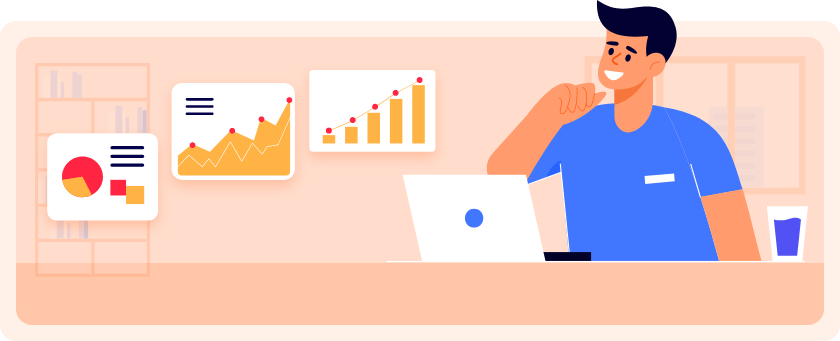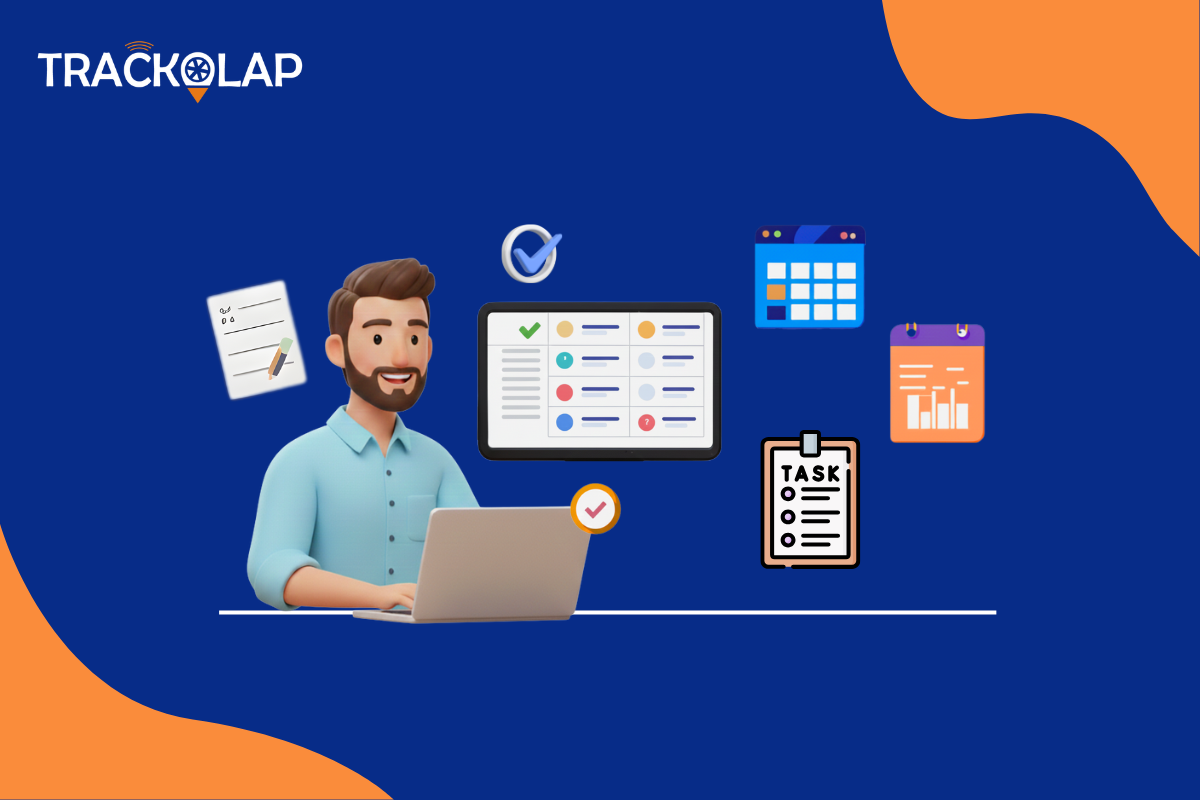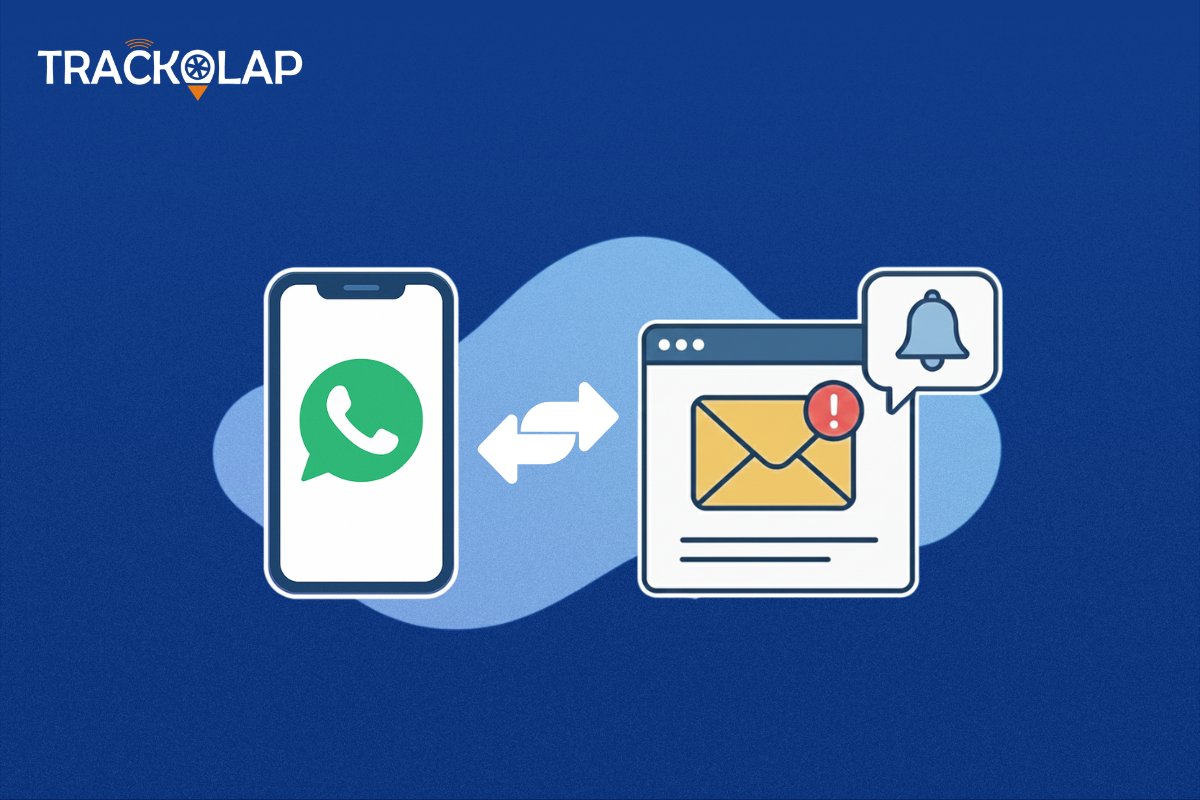
How Can Employee Time Tracking Software Create Healthier Workplaces?
Productivity is vital for any business and employee happiness and health are equally essential. Extended workdays, unpredictable workloads, and ongoing stress lead to tension and frustration. Employee time tracking software is there for the rescue. This is not just about tracking hours but it is about driving an environment that is balanced, transparent, and healthy for employees to grow.
Understanding the Role of Employee Time Tracking Software
Employee time-tracking software helps businesses understand how the teams are consuming work hours. From logging attendance to capturing idle time and providing reports of activity, such tools give real-time insight into what the team is doing with time without constantly reminding them to check-in.
Along with the productivity advantages, time monitoring software has significant positive effects on workplace wellness. It empowers an employee to manage the load better, fosters transparency and provides reports to the managers to support and monitor their team members.
Promotes Better Work-Life Balance
A key component of a healthy workplace is ensuring that employees have a proper work-life balance. Workers build up stress when they are constantly doing overtime, failing to finish their assignments, or even when they cannot take a break from their jobs. Employee time-tracking software provides this level of visibility to managers regarding the hours individual employees spend on various tasks so that teams can implement changes in workloads, realign projects, and ensure no one is overburdened. This encourages high-quality work completed at reasonable hours, making organizations better managed, more compassionate, and output-oriented instead of hours spent, creating healthier work cultures.
Prevents Employee Burnout
Stress is an escalating problem in many industries, especially among employees of organizations lacking structure or support. Tracking employee time software can point out signs of serious issues; employees might be working without access to breaks, always involved in repetitive work, or spending too much idle time.
Such information will allow managers to hold honest, supportive conversations with team members to seek necessary changes and understand new ways to set up expectations. This is not simply an exercise in tracking hours. It is recognizing when someone is dominated and taking proactive measures to ensure mental and emotional well-being.
Builds Trust and Transparency
Trust must be at the heart of any empathetic work environment. Even the most skilled teams will struggle to collaborate and succeed in the absence of trust. Thus, time-tracking tools extend this trust by allowing transparency to exist between employees and management. Everyone knows what is expected, how the time is spent, and where things can improve.
It minimizes micromanagement tendencies and allows recognition of employees' contributions. Everyone will be able to see what everybody else is doing, such as where extra support is needed, and therefore cultivate relationships based on mutual respect and accountability.
Encourages Smarter Work Habits
Different working hours may prove to be differently productive. Some workers can seem busy all day but make little progress, while others may work concentrated bursts of time and produce a lot. This is where time-tracking software can step in to help both groups recognize what good habits work and what bad habits require improvement.
Distractions become transparent and are most likely eliminated, while better prioritization is supported on the way to success. With regular insights, teams can nurture healthier work habits like taking timely breaks, decreasing multitasking, and designating focused work periods, resulting in increased productivity and decreased daily stress.
Supports Remote and Hybrid Workforces
Remote and hybrid work trends change everything concerning how teams operate. While it allows the members flexibility, it poses challenges concerning visibility, accountability, and communication. Time tracking software closes these gaps by allowing people to log their attendance for remote work, receive task alerts on what they should be working on, and stay in sync with everything else happening around them. Managers can monitor progress, raise concerns, and provide feedback without the need for constant check-ins or video calls. With real-time tracking and dashboards, employees feel increasingly connected to their teams and processes. They can enjoy a welcome sense of structure and inclusion from their homes.
Improves Project Planning and Resource Allocation
It is easy for managers to lose their view of how team members spend their time, and soon, some get overloaded while others are underutilized. Such a scenario will ultimately generate stress in the workplace, missed deadlines, and frustration among team members. Business gets relief through such challenges because time tracking software provides raw figures of time spent on any task, individual availability, and an overall view of project progress. With this information, managers can better allocate resources, balance workloads, and realize more accurate project planning.
When everyone knows their job, has a realistic schedule, and can focus without chaos, the entire team benefits from a more peaceful and productive work environment.
Encourages Recognition and Growth
Recognition is another key element of improving workplaces. An employee should know that contribution has been counted, and most importantly, the hard work is understood. Time tracking tools have a much clearer record of item completion, productive hours, and patterns of how a person performs. With these data, managers can give genuine appreciation and proof data behind it. Leaders can point out progress rather than blind assumptions and fairly appreciate employees.
It also makes it easier to find progression opportunities for everyone. Use this to inform coaching, training, and promotions so that an environment exists where employees feel encouraged, appreciated, and empowered to achieve.
Choosing the Right Time Tracking Tool
Employee Time Tracking Software benefits depend a lot upon the choice and use of the tool. Not all time trackers are of equal type. Specific factors are considered when developing software. It would surely make it a reality in making a healthy work culture.
User-friendly: So that they don't feel loaded using it.
Transparent: Employees know how and why it is used.
Custom-made: Align with your unique workflow.
Supportive, not punitive: It should help people improve. It should not appear as a trap by which somebody gets caught failing.
Real-time dashboards, idle alerts, productivity graphs, and integration with daily work apps are some favourite features of companies. If you are looking for such features in employee time tracker tools, go for the best hour tracking app that extends beyond just tracking and brings real value to your employee experience.
What’s Your Next Move?
Employee time tracking has grown beyond pure task monitoring into one of the best uses of technology. A tool for creating more human-centred workplaces that promote health. It should help people claim their time, reduce stress, strengthen communication, and create a happier work experience. Time-tracking solutions provide measurable value and improved coordination among remote teams to satisfaction-enhancing for growing businesses.
By using TrackOlap , you increase your team in performance and wellness with the latest employee time-tracking software that suits modern corporations. From real-time tracking to comprehensive productivity insights, TrackOlap empowers you to create a healthier, more efficient workplace. Enjoy a free 7-day trial today and see for yourself how smarter time management makes for a happier, high-performing organization.
Frequently Asked Questions (FAQs)
1. How does employee time tracking software support a healthier workplace?
Time tracking software helps employees manage their work hours efficiently, avoid excessive overtime, and maintain a healthy work-life balance—reducing stress and burnout.
2. Can time tracking software actually improve employee well-being?
Yes. By making workloads visible and manageable, it helps organizations ensure fair distribution of tasks, reduce employee fatigue, and promote overall wellness.
3. Is time tracking software intrusive or stressful for employees?
When used transparently and ethically, time tracking software is a supportive tool—not surveillance. It helps employees stay focused and gives managers data to improve processes, not micromanage.
4. What are the key features of a health-conscious time tracking tool?
Features like break reminders, overtime alerts, automated work reports, and mobile accessibility help employees manage time better and reduce unhealthy work habits.
5. How can it help with burnout prevention?
The software flags excessive work hours, encourages regular breaks, and gives insights into overworked individuals—allowing managers to intervene early before burnout occurs.
6. Is employee productivity affected by time tracking?
Yes—in a positive way. Employees become more aware of how they spend their time, stay organized, and are less likely to procrastinate or overwork themselves.
7. Why should businesses choose TrackOlap for time tracking?
TrackOlap offers smart, automated time tracking features that prioritize both performance and well-being. It's user-friendly, customizable, and supports hybrid and remote work cultures.






























 Back to Blogs
Back to Blogs










 D-5 Sector-59, Noida, Uttar Pradesh (India)
D-5 Sector-59, Noida, Uttar Pradesh (India) contactus@trackolap.com
contactus@trackolap.com 7011494501
7011494501










